#peasant dresses
Text
Disney princess casual outfits from best to worst IMO




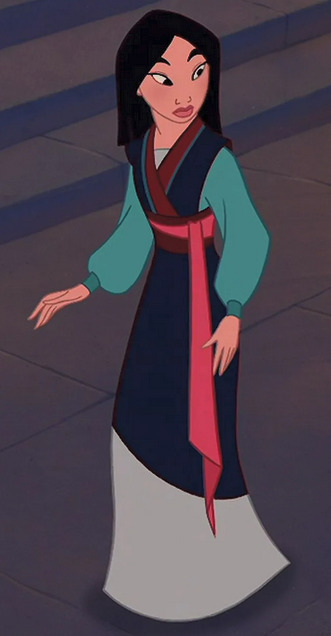

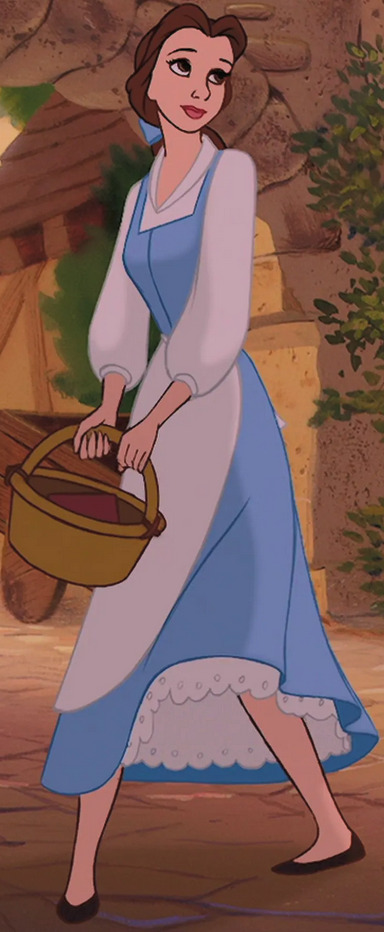

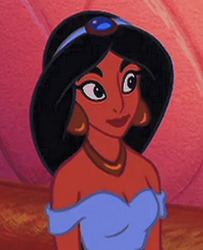
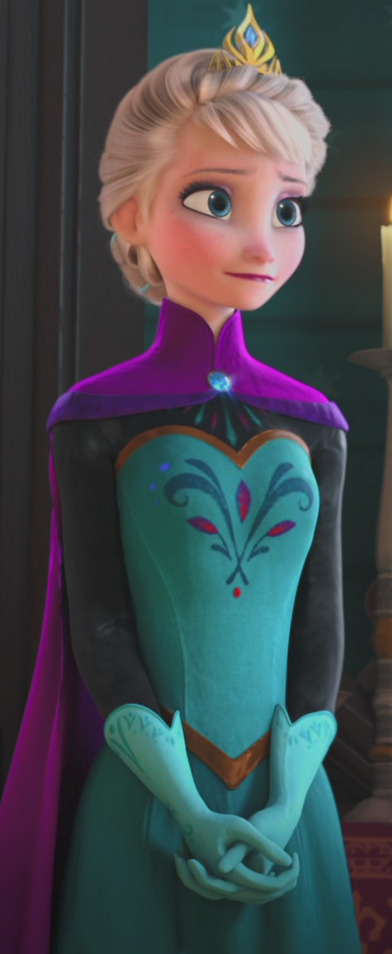

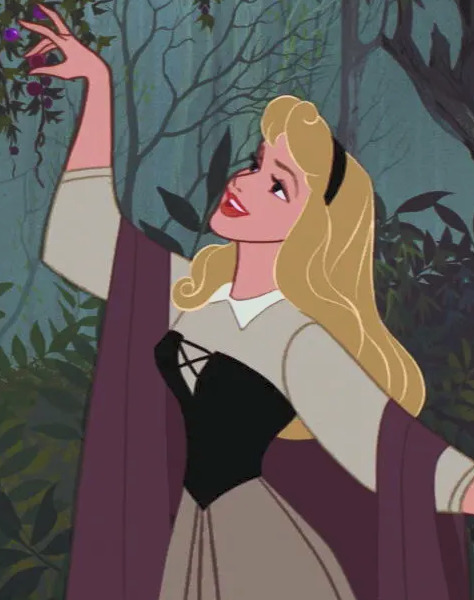

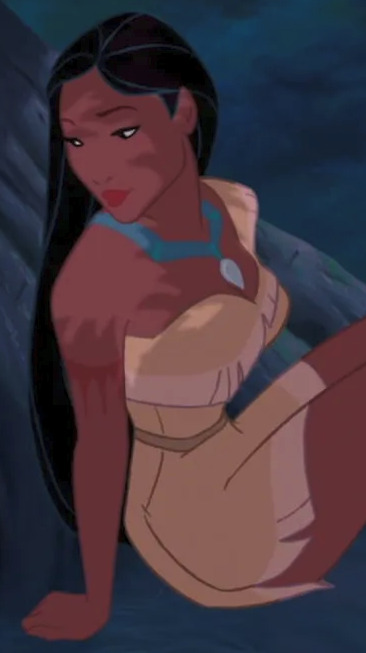
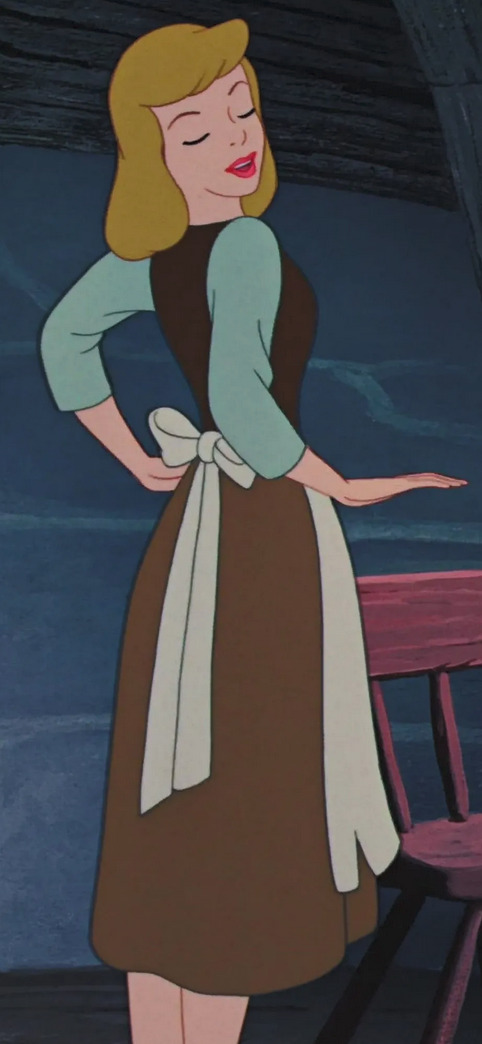

@lovestrucklyuniverse asked me what my favorite and least favorite Disney casual outfits were since I made a tier list on which fancy dresses! So once again I've made both a tier template, which you can try yourself HERE, and also did an actual list from favorite to least.
Moana
You guys may remember that I'm one of the people who were PISSED when Disney Dreamlight Valley changed the color scheme for the Moana 10 level friendship dress... and I am STILL MAD. I LOVE HER COLOR SCHEME. Honestly I love her ending outfit too, I forgot to add it to my Disney princess gowns tier (oops) but overall I've always had an affinity for Polynesian-Hawaiian fashion. I love all the details without it being overwhelming, and that necklace is gorgeous too.
Anna
I know that TECHNICALLY Anna's real "casual outfit" is actually just her fancy gown, but with sleeves and a cape - or at least it's very similar, so for me that meant I might as well do this dress instead. Could I have gone into Frozen 2? Sure, but I didn't want to do that because then I would have to consider ALL Anne and Elsa's outfits and that'd take forever. If I were gonna do that, I'd rather do a list of ONLY Frozen outfits or something xD Anyway, I think this dress is HELLA cute! A real nice spring dress, with some cute nature details at the bottom along with a "corset" and long sleeves. I like that while it's overall green, there are some pink accents and it has multiple shades of green so it doesn't feel too simple.
Rapunzel
I already mentioned this in the gown version of this tier list, but I am overall a fan of all of Rapunzel's outfits. I would have LOVED to see her green concept art dress though, holy crap. I hope there's a cosplayer out there who has made that dress cause I want to see it irl SO BAD xD Anyway, the dress we got is cute! Different shades of pink and purple, SMALL puff sleeves and loads of small details along with lace. I'm a lace girl, love lace, will never say no to lace. Probably.
Mulan
Now see THIS is a much better outfit for Mulan! Which is interesting cause it has a similar color scheme to her fancy hanfu, dark blue, dark red, grayish white and a pinkish red as well. So... why does this look WAY better to me??? I don't know. It just does. Perhaps I'll try to do a color swap of these two and see if I can make myself like Mulan's fancy hanfu more that way xD
Ariel
This dress is so stinking cute and the bigass bow in Ariel's hair is hilariously oversized, but in the best way xD I like that it's blue, but three different shades so it - like I've mentioned earlier with Anna's dress - isn't just one solid color. It is just a tiiiiiny bit too simple for my liking though, which is why it isn't higher on my list.
Belle
Not gonna lie, I heavily prefer Belle's peasant dress to her fancy, gold gown. It's simply color-wise, but the color switch around enough for it to not feel like one solid block of color. White shirt with poofy sleeves and a collar, blue dress with thick straps and a white petticoat along with a white apron. No cute little details or anything like that, but it doesn't feel that boring despite only being two colors. Also, her hairstyle is super cute.
Kida
I actually like like Kida's outfit just fine. It's nothing fantastic though and I think it's a little bit safe. Atlantians are, from what I know, a fictional group of people and culture, right? Why not experiment a bit more? Make her wear something that stands out! Instead it's just something I can imagine seeing a random white girl wear at the beach. It's not bad, but it's one of my many issues with the visuals of the Atlantis movie.
Jasmine
I like Jasmine's outfit fine. But it's all the same shade of blue and has NO details whatsoever. Yes, the "belt" of her pants is a lighter shade, but not by much. If it had a bit more decoration on it, I would like it a lot more. And I don't like those earrings. They've confused me since I was a child. How high up are her earlobes supposed to be exactly??? I don't know about you guys, but my earlobes are parallel to just below my cheek bones. On Jasmine, based on the earrings, it looks like her earlobes are parallel to the lower part of her eye which is just VERY high up, isn't it??? Either way, a fairly simply outfit that I think only really works cause Jasmine's own beauty carries it all.
Elsa
Eh... this dress should be right up my alley. I love cyan and teal shades, it has long sleeves, there's purple there, there's some cute details without them being overwhelming. On paper, I should love or at least like this dress and I just... don't. I really can't explain why, it just doesn't do anything for me. My only guess would be that it's tight. It looks limiting. Which is kinda the idea given what Elsa is going through at this point in the movie, so I like it for her, but personally it just doesn't work for me.
Merida
Again. Dark teal/cyan, but with Merida's dress I can easily explain why I dislike it: IT'S SO FUCKING BORING. It's one solid color all the way through and then it has those small frilly thingies on her wrists and upper body and I despise frills. Hate them. Reminds me of whipped cream and I hate whipped cream too xD And the frills being fucking beige doesn't help xD
Aurora
Boring peasant gown is boring, but I love that corset! But there's too much... beige, gray and just... I like color, okay? Or at least just not "neutral" colors like this. I might honestly have liked it more if it had dark, warm, earthy color instead. I am anti-beige xD Also never been a fan of this type of collar. It's giving school uniform and it makes me feel two types of ways and neither are what I should be feeling looking at a Disney movie xD
Tiana
This shade of yellow is one of the ONLY shades of yellow I actually like, otherwise I am just not a fan of yellow, usually. I do think it suits Tiana very well, but outside of that it's just very plain. I like the silhouette, sorta, but that's about it.
Pocahontas
Again, not a fan of neutral beige'ish colors. And what pisses me off is that if you google Native American fashion, there are SO MANY gorgeous examples. Once again, I get that animators might not want to put a bunch of details on an outfit of the main character, but goddammit, why does it have to be THIS boring??? Thankfully the necklace is there, but the dress on its own is just really boring.
Cinderella
Do I even have to explain this one? Disney has made plenty of cute "housemaid" outfits (Nanny from 101 Dalmatians, Mrs. Jenkins from Pocahontas 2) and this is just not one of them. But considering that one of the reasons Cinderella is wearing such a plain outfit is to make her ballgown that much more amazing, and that I find that to be one of the most boring Disney ballgowns, this outfit doesn't work for me.
Snow White
I mean, come on. It's supposed to be ugly and they succeeded. Can't really hate it for doing its job xD
Check out my tier list for Disney princess gowns here!
6 notes
·
View notes
Text
What "The Hidden Fortress" (1958) tells us about the Jedi's status in the Prequels.
In 1999, George Lucas had this to say on BBC Omnibus: A Long Time Ago: The Story of "Star Wars" and then The Phantom Menace's director's commentary.
“I greatly admired Kurosawa, especially the film Hidden Fortress, which told a story from the point of view of two serfs, two slaves...

... peasants who tag along with this famous general and a princess-- y'know, royalty. And the whole story is told from their point of view. And I like that idea.
I like the idea of telling a story from the lowest person's point of view, uh, in the food chain, and that's how the story got to be told by Artoo and Threepio.”
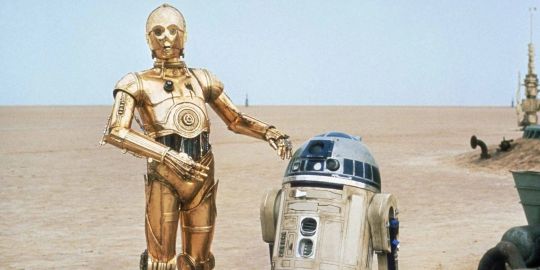
“[The Phantom Menace] is told primarily from the Jedi's point of view, but the story that's being told is essentially the story of Queen Amidala and her plight of having her planet blockaded. As in, say, Episode IV, where the story is told through the eyes of the droids, in this one, it's told through the eyes of the Jedi.”
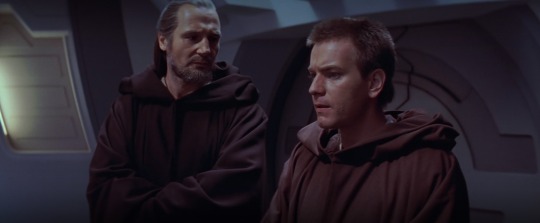
“But [from the moment we get to Coruscant, Anakin and Jar Jar] are standing on the sidelines. It's a little bit a riff on the very first film where the story is told through the point of view of the droids, who were sort of the lowliest characters.”

“And in [Phantom Menace], I'm doing it through - primarily - the two Jedi, but then the secondary characters are also carrying a lot of the weight when the Jedi aren't around.”
George Lucas draws a comparison between lowly characters like Hidden Fortress' peasants Matashichi and Tahei, the droids in A New Hope, as well as the Jedi in The Phantom Menace.
What do they all have in common? They are all the lowest-ranking characters in their respective films. Repeat: the movie frames the Jedi as almost at the bottom of the food chain.
Because of course they are. Functionally, they're just diplomats. They hold no political power whatsoever and barely have any authority .
What little authority the Jedi do have in TPM comes from the Queen's young age, which allows them to ease into a more advisory position, and Qui-Gon's rebellious streak. And even he's explicit about the fact that his mandate has limitations.

The only characters "below" them in status are Jar Jar, an exiled Gungan, and Anakin, who just yesterday was still a slave kid, Artoo the literal object and that's it!
Also the other Prequel films are consistent with this portrayal. Who do we see lower in status than the Jedi? Dexxter Jettster and the clones. Everyone else is pretty much above them.
Yes, the Jedi are part of the system, but they're not as high-ranking as you'd think. Yes, they have Force Powers, but that means squat when put against political power. So, like, to expect the Jedi to...
influence the decisions of the Senate,
wage a war against the Outer Rim to end slavery,
or blatantly refuse an order to join the war effort,
... is incredibly unreasonable.
They're not meant to be seen as "the elite, peering down upon the people from their ivory tower".
They're the servants! Servants of the Republic.
And they're seeing their higher-ups destroy what they should all stand for, but are unable to stop them.
Later on, with The Clone Wars, we are introduced to civilian characters and from their point of view, the Jedi are ultra powerful and are highly placed and "should do more but don't".
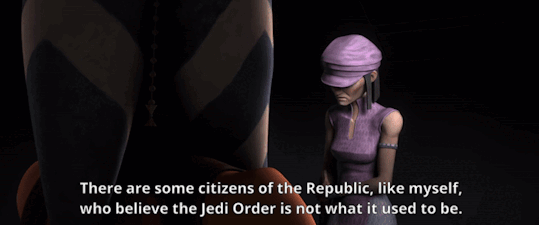
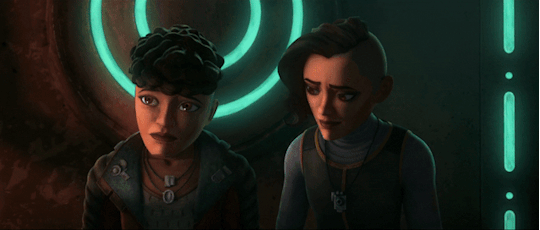
It makes sense that these characters would see the Jedi as 'the elite'. But they don't have the full picture.
We, as the audience, do.
So we know that the reality is more along the lines of the Jedi "should do more but can't".
After all, we are made privy many instances of the Jedi speaking up and trying to change politicians' minds, only to be dismissed and overruled at every turn.
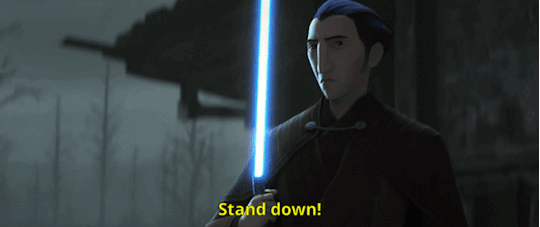
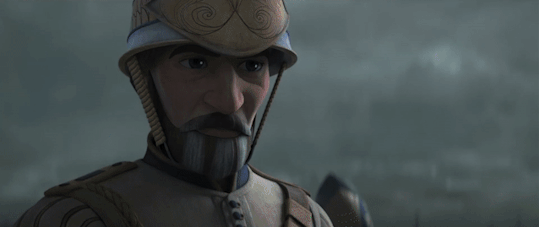




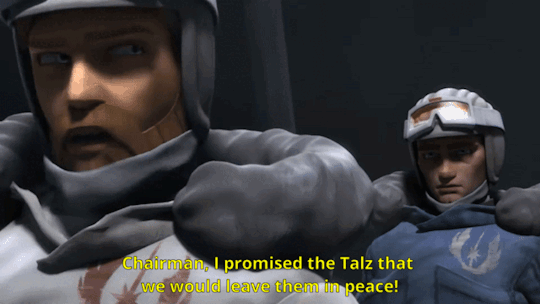
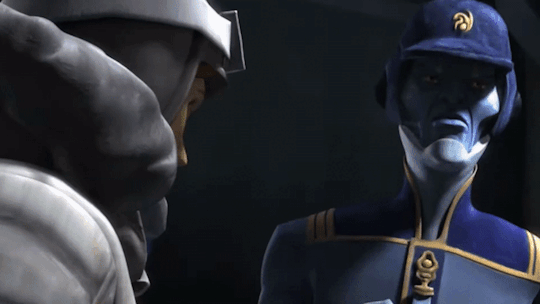

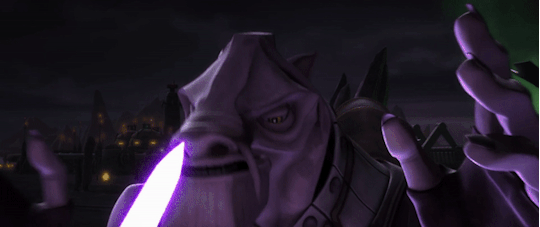
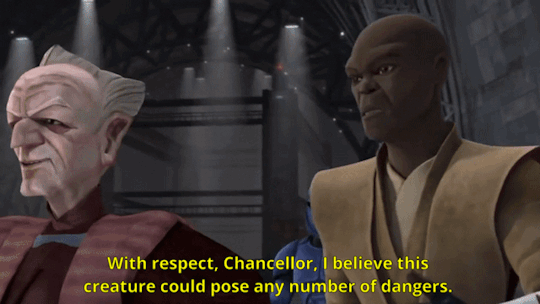
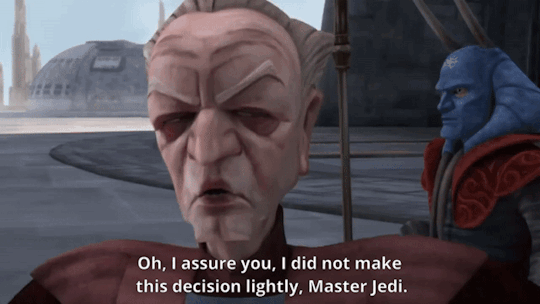


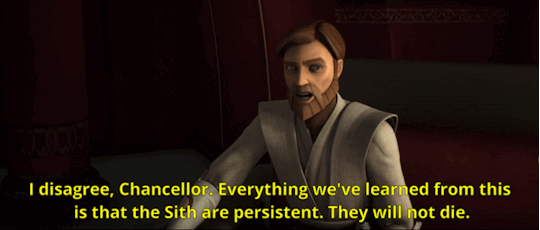

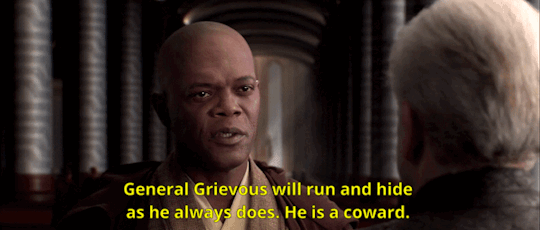
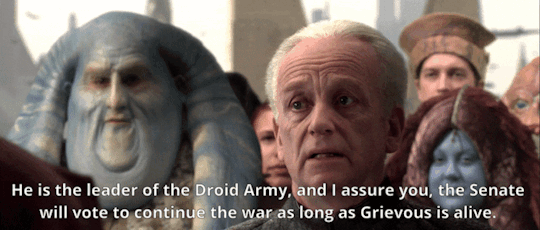
↑ these aren't even all the times we see it happen, btw, there's more examples...
So at some point, if you - as an audience member - see all this and are still saying "the Jedi should've done more!" I really need to know... what more could they have done?
Take control of the Senate?

That'll result in a dictatorship, there's a reason they waited as much as they did before trying to take down Palpatine.
Power corrupts and they're wise enough to know it.
Don't join the Republic in the first place?
George Lucas never frames the Jedi's involvement with the Republic as a bad thing. In the foreword to Shatterpoint (2004), he says their being part of the Republic led to 1,000 years of prosperity.
Where's the issue, then? Well, it's a two-man job and the Jedi's bosses, the Senate, grew corrupt and stopped doing their part. They stopped carrying their end of the couch.
But “no Jedi in the Republic from the get-go” means the Sith will rise to power even faster. Fun!
Stay neutral in the war?
The Separatists were killing civilians and testing weapons on neutral systems, or enslaving them.


The choice put before the Jedi was "do what we tell you and fight, or let people die".
But also, out-of-universe... do you really think Palpatine, genius politician, master of spin, can't re-frame the Jedi staying neutral in a negative light?
When they joined the war, he unleashed propaganda that either directly (on the Separatist side) or indirectly (on the Republic side) framed them as "warmongers who corrupted their values". If they don't join, they're "apathetic cowards who care more about their own values than the lives of the people they're supposed to protect".
So either way, Order 66 comes around, wipes them out and the Republic goes "good riddance".

So what else could they do?
The answer is "not much".
Because the whole point of the narrative is that Palpatine checkmated them by taking the fight to a field the Jedi had no experience in or right to meddle with: politics.
So if you look at these characters who are nowhere near the top of the food chain, and say "well, why didn't they fix things?" I'm sorry to say you're missing the point of the narrative.
Or maybe you do get the point of the narrative and just aren't trying to be fair...

... in which case, at least be consistent and also argue:
"Why didn't Threepio & Artoo do more to save the Rebel crew of the Tantive IV from the stormtrooopers?!"
"Why didn't Matashichi & Tahei do more to save the Akizuki clan?!"
#HINT: the answer to both those rhetorical questions is “there was nothing they could do”#Also while we're on 'Hidden Fortress' - it's also worth pointing out that Qui-Gon and Padmé's dynamic on Tatooine in TPM#is very similar to the dynamic of General Rokurota and Princess Yuki in 'Hidden Fortress'.#The older warrior looking after the royalty teenage girl who is dressed as a peasant so as to not draw attention because she's on the run.#The Hidden Fortress#Akira Kurosawa#George Lucas#Artoo#Threepio#c3po#r2d2#lucas quotes#meta#on the jedi's involvement in the clone wars#in defense of the jedi#jedi order#qui-gon jinn#the phantom menace#star wars#long post
817 notes
·
View notes
Text
one thing abt visibly chasind morrigan that’s super interesting is that it makes your ability to ask if flemeth is really her mother actually makes sense when it’s startling how fereldan flemeth looks and dresses when you’re brought there
#not in the ‘how could this white person and mixed race person possibly be related!’ idiot type of way but like#morrigan especially with her heavy coat with the mods i use looks so adapted to the landscape and at home#so when she brings you to her mother and she’s just a visually fereldan white woman in fereldan peasant dress you’re like. Huh.#and there’s something i quite like about her very normality to say a cousland’s eyes being so startling and out of place#in terms of the Something Is Off Here vibe but also maybe just believing she’s simply an apostate on the run#combined with her ability to put on a very different guise in the later games lmao i like the shapeshifterisms of it as well#she could take any form but shes confident enough to choose the one that sets off warning bells and dare you to challenge it
202 notes
·
View notes
Text

And to that, I hold. I would rather share one lifetime with you than face all the ages of this world alone.
(Original photo from medieval festival in Belgrade, Serbia - ig: @sarcasmaddict_ @_witch_king_of_angmar )
#15th century#living history#medieval#reenactment#reenactor#medieval clothing#medieval knight#fantasy#photoshoot#photo edit#princesscore#medieval fashion#medievil#medien#poppy and casteel#medieval painting#medieval period#medieval poetry#medieval peasant#medieval dress#tailoring#sewing#embroidery#fabric#instatumblr#instalike#instagram#aesthetic#lord of the rings
118 notes
·
View notes
Text
hey psst hey reblog this and describe in the tags what your tav/durge is wearing on their wedding day to their romanced partner (or what they’re wearing on a special occasion like an anniversary or other relationship milestone celebrated with their romanced partner)
#I’ll go first#dani is in an airy white peasant dress her mother sewed and embroidered for her#beautiful embroidered flowers and swirls along the hems and such#and she’s got four scarves tied around her waist from the merry rovers#the scarves are dark blue and gold and pinkish red and light blue#I could do the others but that’s a lot of tags#bg3#baldur's gate 3#bg3 companions#bg3 headcanons#ngl I’m bored today and curious what other people envision for their ocs
29 notes
·
View notes
Text

literally my sweetie pie baby boy angel sunshine of my lifetime look at him rn <33333
#even dressed like a medieval peasant he is like the cutest most attractive person on earth. im so normal abt him!!!!!!!#fob posted this on ig but idc about the rest of the pic. only HIM#txt#ps
71 notes
·
View notes
Text
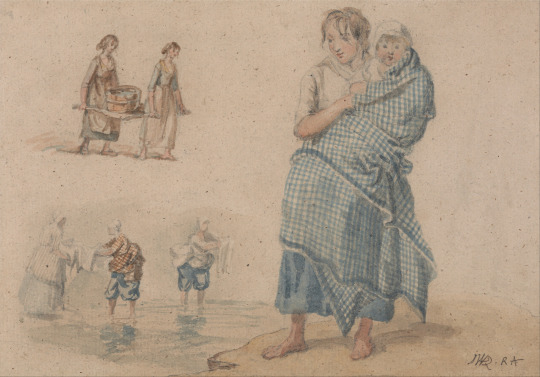
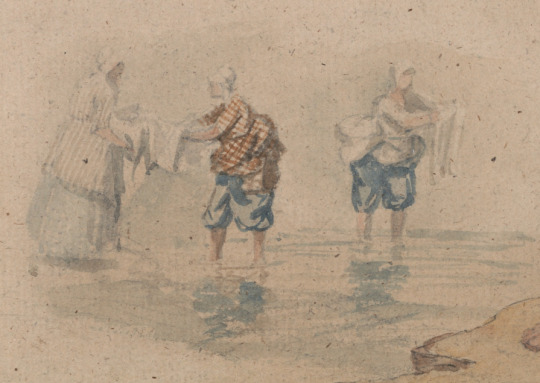
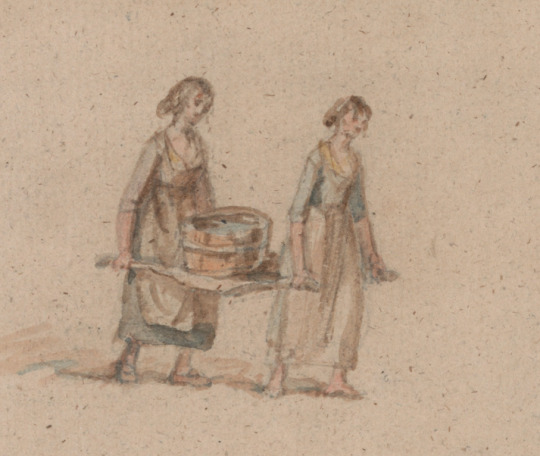
"Scottish Peasant Women" by James Ward(1769–1859)
This might sound strange, but this sort of art is a favorite of mine. Sure it might not be polished, but you get a rare chance at seeing the little details of how people lived in the past.
Look at how the one woman has a baby wrapped in her skirts, or how in the other, the skirts are arranged to keep them out of the water. Its little details like this that are often forgotten in media.
16 notes
·
View notes
Photo

58 notes
·
View notes
Text
All this barry height thrutism shitposting is making me feel tall today lmfao
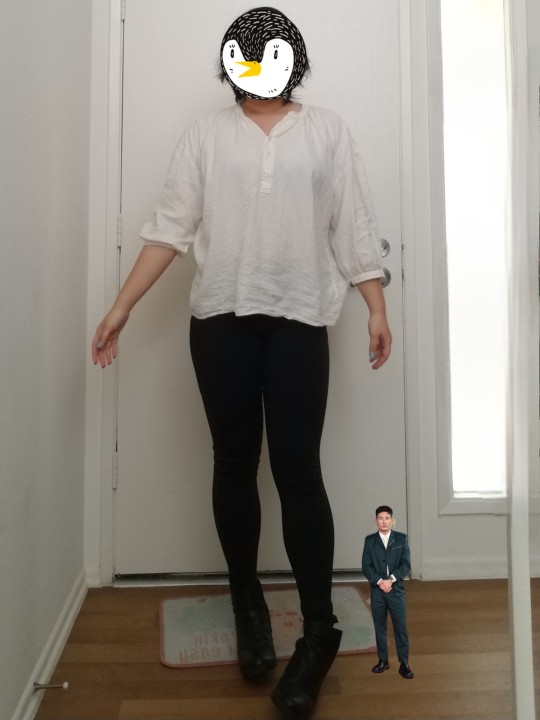
#don't mind me dressing like a medieval peasant#im 165cm jsyk#might actually be taller than barry lmfao 😂😂
13 notes
·
View notes
Text
I'll never forget that time that I read a book that was a retelling of Beowulf from the POV of his Grendel's mother.
Okay, okay, normal enough, normal enough. Possibly a nice way of adding a little bit of a female perspective to a story that can be a little bit lacking in that department goo--
Except for, besides being very weird in general and going with the idea of Women's Oppression™ Throughout History Looked Exactly The Same And Resembled Something From A Bad Fantasy Book, it gave me Grendel's mother hating dresses because they restricted her work in the fields.
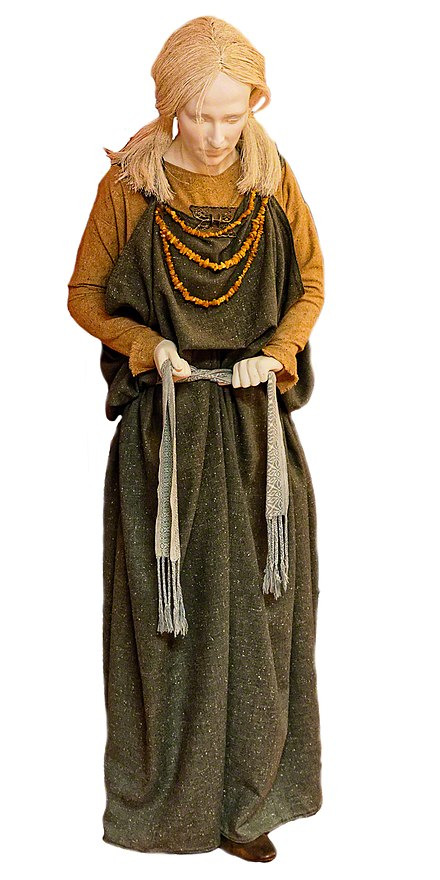
*So restrictive*
You can't even FIT Corset Discourse on here because this is before the corsets even EXISTED as garments. This is before the GRANDMA of corsets existed as a garment. A woman at this point in time is not wearing RADICALLY more cloth than a man, honestly. You are functionally wearing a pretty loose fitting dress and then something over it that is also loose fitting.
#do people think that historical peasant women/otherwise employed women were just suffering in their Restrictive Dresses#unable to move around#not able to contribute to the household#or only being able to do so through immense discomfort?
25 notes
·
View notes
Text







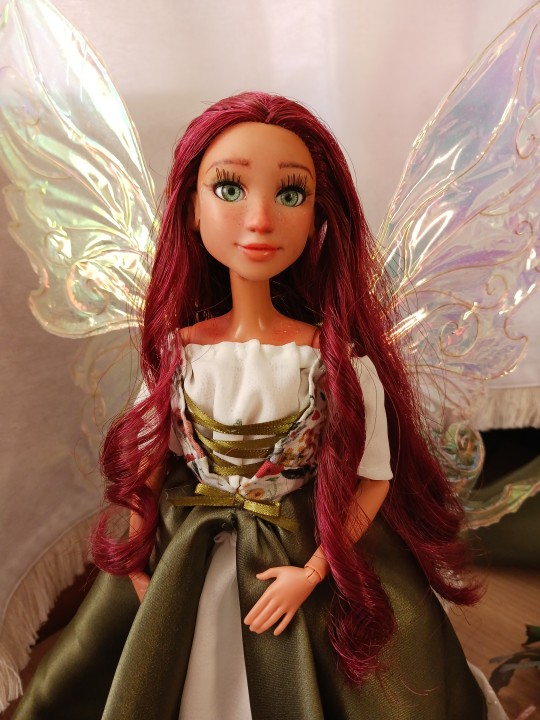
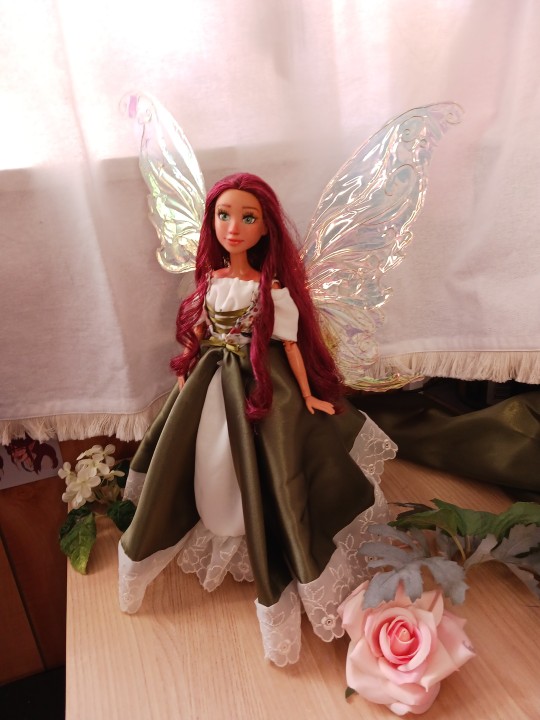
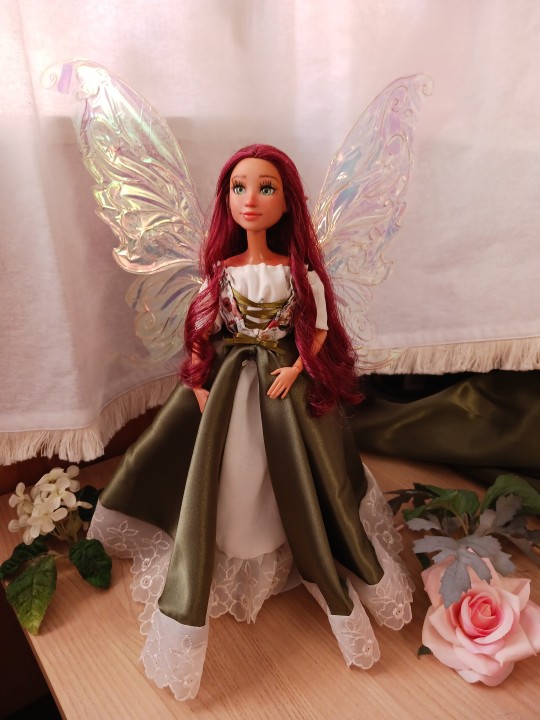
A couple people seemed interested and I'm taking it, custom doll I just finished of Maggie TvT
The face is Project Mc2 Camryn (but I swapped the eyes out for McKaylas green ones) on a barbie made-to-move body and then I repainted the face, sculpted her ears, sewed the dress, crafted and attached the wings and did some curls to her hair. Idk I'm super happy with how she turned out this is something I've been wanting to do for a while. Fairy lady beloved TvT
#original characters#maggie#ooak#ooak doll#custom dolls#fairy oc#pretty different from what i usually post but im so proud of her right now ^^'#twisting all the wires for those wings took forever lol#and adjustments to thr pattern to make the dress backless and add the petticoats and stuff#plus mixing patterns for the peasant top of her dress going under the corset straps#anyways ye rambling but TvT
29 notes
·
View notes
Text
i don’t understand bethany’s chainmail what’s happening here. that cannot be how chainmail works
#drawing over a hawke family screenshot to get them how i want them and i dont know where to start w this outfit girl#she looks cute but. what.#i dont know whether to just make it peasant dress or to commit to the chainmail#but i cant do whatever this halfway point is
94 notes
·
View notes
Text
our esteemed president is convinced that in medieval times people didn't bathe regularly. he uses this excuses during reenactments, to stay dirty, convince us to sleep in the same clothes that we sweat all day and use them the next day too and shut down any request of finding accommodation for us to shower after we close up camp.
I know, shameful for the president and founder of a medieval reenactment company.
unfortunately for him, we're no as uneducated as we used to be when we first joined, so we know better now (medieval times were the times when personal hygiene came back in vogue after the fall of the Roman Empire and the first wave of "our bodies sinful and taking care of them is reproachable" - courtesy of the first Church). as for many things, we have to thanks the Arabs for this, but it's another long parenthesis.
truth is, especially in the period we're reenacting, everyone loved a good daily scrub after work and a full bath every few days. and soap existed (thanks the Arabs, again).
now, to the fun part. till now we always camped in mountain valleys without water bodies nearby, but we might have the chance to start doing them regurarly in a valley where I usually go in Summer to bathe in the river (I honestly prefer rivers to seas and lakes).
which it means that I'm already plotting to force people into the river to bathe themselves after we close up camp. with soap (do you know that Marsille's soap is very very old? and we live next to France and we always had a close tie with them - still had it till we kicked out our useless royal after WWII).
so, no more excuses. our president will have the chance to prove how much of a macho he is by bathing in the frigging river. I will dare him.
#and we are all TIRED of staying in the same clothes the second day#but this is again the president and his wife fault#they should be the marquises but they dress like the last of the peasant#which forces us to dress very modestly but we want more different and better clothes not just simple work clothes#every one had nice clothes because the nobles used to gift to the people the ones they already used for 3-4 years#and many knew how to embroider so free time clothes were colorful and very decorated#medieval times were 1000 years of innovation and colors and many things#they're called the dark ages because before 1200 the chronicles are very scarce#it's dark because we have not much light on all the events#not because they were constantly sad and hurtful
5 notes
·
View notes
Photo

Peasant style dress, late 1920s.
42 notes
·
View notes
Note
Hiya!
Love your blog! So much cool info here. I don't know if this is the kind of thing you are interested in or know much about but I'm making a cosplay of Mary from the BBC Ghosts. She supposedly died in the early 17th century but I can't find anything on the blue bodice/waistcoat she is wearing. I think it is closer to 19th century stays? Anyway, I get it's not 100% historically accurate costume, just wondering. Thanks!
Hi, Anon! And thank you so much!
I haven't watched the show, but I checked out the outfit and here it is for those who also didn't know it before:

A quick look at the Ghosts wikipage of her tells she was an English peasant.
I ended up falling into a bit of research rabbit hole (which is why it took me this long to answer). The evolution of working class garments from Elizabethan era to 1700s ended up being very interesting and surprisingly complicated. It doesn't make it easier that there's very little info on the subject, especially regarding English working class. It's much easier to find info on Dutch and Flemish working class clothing, as the Dutch golden age/baroque art was very interested in depicting working class people, the style also provides abundance of detail. English artists were much less interested in painting common people.
To make the rest make any sense I think it would be useful to outline the evolution of garments used in 16th to 18th century. In 1500s kirtle (here's a post where I talk about what kirtle is and it's evolutiona mong other things) was becoming more and more structured, eventually it's bodice becoming fully boned. Lower classes wouldn't bone their kirtles but reinforce them with several layers of canvas or buckram. In the first half of the century a short wool coat was sometimes used under the outerwear far warmed called petticoat. It was the Little Ice Age after all. Two boned or highly stiffened kirtles started to be used on top of each other, the first layer being made from cheaper materials and acting as the actual supporting layer, and the one on top of it from more expensive materials, stiffening (not necessarily boning) making sure the fabric is structured and without wrinkles. In the latter half of the century petticoat started to refer to the undergarment kirtle. Petticoats usually were a full dress like kirtle, though there's references of "petticoats without the upper bodies" so petticoats with only the skirt were also used as undergarments.
It gained the connotation of a simple and not very fancy garment, which is why the lower class kirtles started to be called petticoats by late 1500s. Lower classes might also wear two layers of petticoats, often in contrasting colors, probably in cold weather and then one layer in hot weather. The bodice and skirt also could be contrasting colors. The outer petticoat had almost always lacing in the front, but the petticoat under it might have lacing in the back or side so it's fabric could be seen under the lacing over it. At least Dutch and Flemish women would usually have a stomacher of contrasting color under the front lacing if they didn't have a petticoat under. Very wide lacing which showed off the fabric beneath was typical (but not necessary) for those and the German speaking areas. Petticoats would often have attachable or sewn-in sleeves like kirtles since Middle Ages, so that they could be worn as undergarment without sleeves and outer garment with sleeves if necessary.
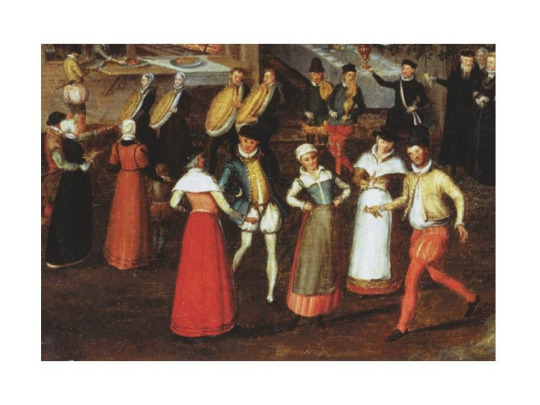
An example from 1570s England. Two of the three peasant women in the front are wearing petticoats with bodices made from different fabrics.

An example by Flemish painter from around 1560s/70s. The left-most woman is clearly wearing a soft stomacher under her petticoat and the woman in the very middle has attached sleeves as shown by the bulging shift in her arm pits.
Over the petticoats though working class women would often wear a looser sleeved over-garment which wasn't laced. Around Netherlands area it was a short jacket with widening hem at waist often called waistcoat, like on the right-most woman in above painting, though I'm not sure if that is actually contemporary term for it. In late 1500s England the over-garment seemed to be more commonly a full length gown open in the front with short or full sleeves, similarly as the fashionable outer garment of the upper classes but much simpler, but by early 1600s the waistcoat is most commonly depicted in England too. There were couple of important accessories. Partlet was in 1600s most often white linen, while in the earlier century woolen black partlets were also common (the woman in the middle of the Flemish painting above is wearing both). In 1500s and early half of 1600s the partlet had high collar with ruffle like shown in the above paintings and it was usually worn over the petticoat (though sometimes under) and under the waistcoat or similar over-garment. Apron was also very important for working women, and while most often it was white linen, wool and different colors like show in both paintings above were also common. Kercief, a (most often) white linen scarf pinned on shoulders, was also common, especially in England, as shown in the first painting and the one below.
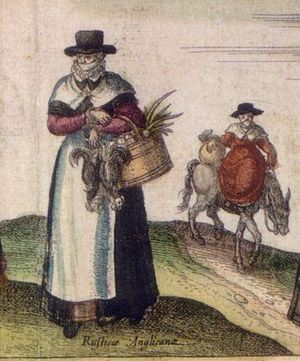
An English peasant from 1582 illustration wearing an open-fronted over-gown with short sleeves.
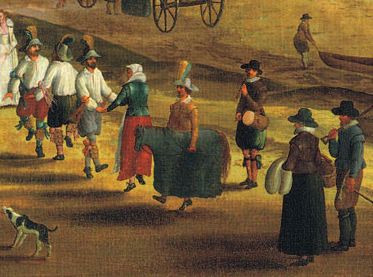
English peasants dancing from 1620s, while the women are wearing waistcoats.
In the fashion of the upper classes the bodice of the petticoat and the skirt of the petticoat started to appear as separate garments in late 1500s. A separate bodice was referred to as pair of bodies, or bodies, similarly to the bodice of the petticoat was referred to as upper bodies like I mentioned before. The word bodice actually derives from it. For clarity I will call the separate boned bodice as bodies. Like petticoat it was very much an undergarment, though could be used as a leisure wear in private. Like other supportive clothing that could be used as both under and over garments it also often had detachable sleeves. The full petticoat would fall out of use by the upper class by mid 1600s, but bodies wouldn't become universal as the structural layer yet, as the outer gown's bodice would often still be boned and used as the supportive layer. Working class women would use full petticoats till late 1600s, but separate bodies would become more widespread from early to mid century onward. Boning also would get adopted into working class clothing around mid century, though stiffening with fabrics or barely at all would continue to be common the whole century and still continue till early 1700s.
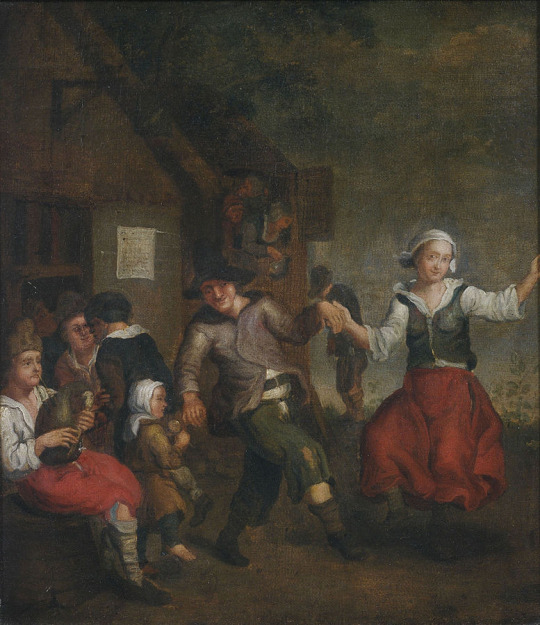
An example of bodies without boning on a peasant woman from the second half of 17th century Netherlands.
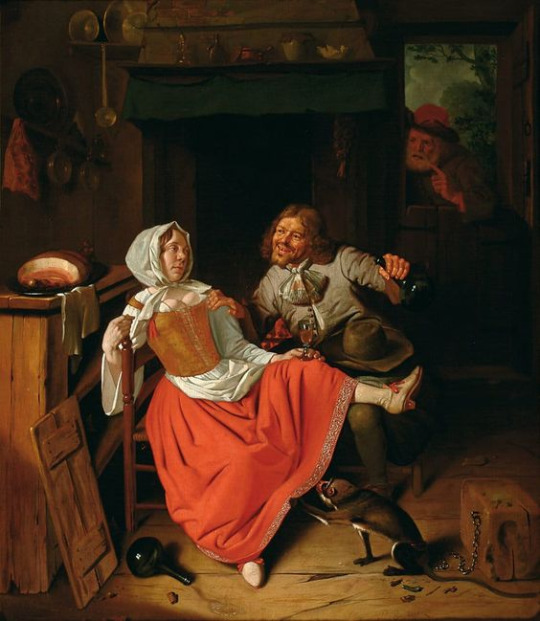
Working class woman with boned bodies from 1665-70, also Netherlands.
In 1680s there was a huge shift in the upper class fashion as mantua, completely unstructured garment, became extremely common and stays were developed from bodies to be it's supportive layer. Before that the boning was called stays, which alludes to the increasing distinction between outer and under clothing, as stays would be more of just separate boning rather than garment that could be used on it's own (though it could still be worn on it's own in some cases). In working class fashion the full petticoat fully disappeared by 18th century and the basic set of clothes was petticoat, supportive bodice without boning or stays (which would become almost universal during the century) and bed gown or jacket. Bed gown was short and very jacket-like, but a looser and t-shaped without the shoulder seem. Both were increasingly used regardless of weather.
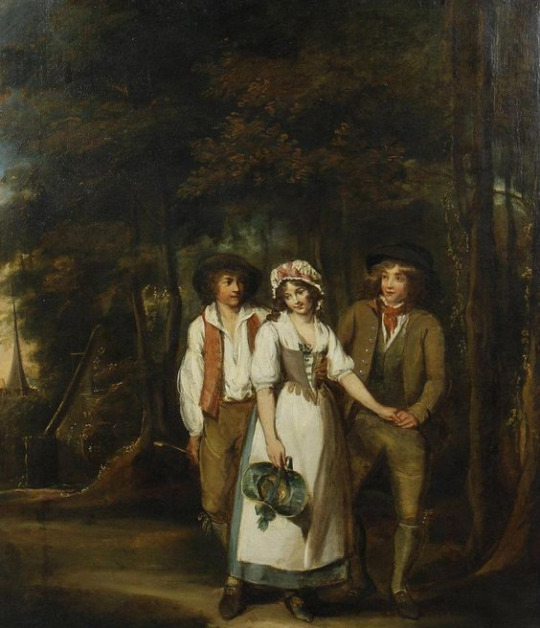
Stays as outer garment from around 1780s-90s.
I think that Mary's blue waistcoat/bodice most resembles 18th century examples. Specifically, the supportive laced bodices without boning, like in the examples below. Unfortunately I haven't found any info about them. The cut is simpler than stays and actually reminds me most about jackets/waistcoats without sleeves. I've read there was laced under-jackets used in 18th century, so I'm wondering if these bodices relates to that. Maybe likelier origin is that they evolved from the previous century working class bodies that didn't have boning. Mary's bodice however is cut very differently. The neckline is high unlike these 1700s bodices, which purpose was to lift the chest.

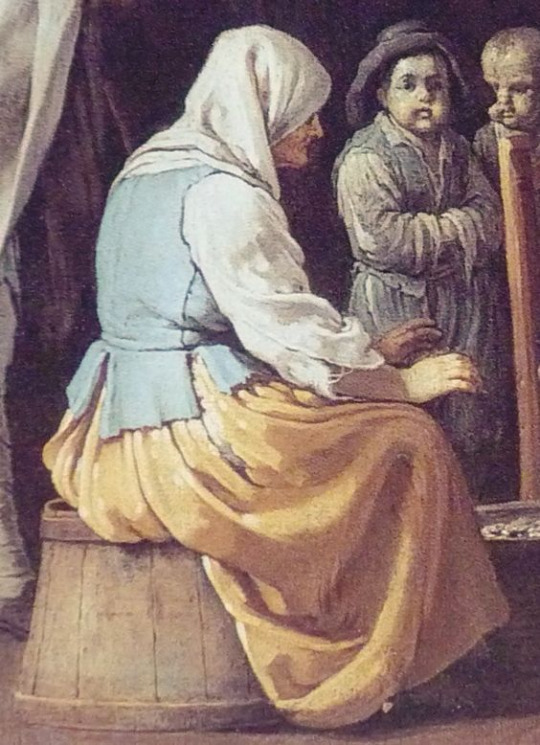
Firstly a Dutch painting from first half of 18th century and then Italian painting from 1721.
Because supportive garments became very much undergarments or at least the second lowest layer right after shift, even if nothing was worn on top of it, it really doesn't fit Mary's bodice. Though I maybe found an exception where stays are possibly worn on top of a sleeved waistcoat or maybe bed gown, but it's hard to say and I haven't seen any other examples of that.

A 1713 Dutch illustration of Brabant, Belgium, dress. The bodice part looks like it could be a bed gown or similar loose jacket-like garment with boned stays on top of it. With little detail and no color it's hard to say though. It could be also a boned jacket or jacket on top of stays.
There is actually a fairly well documented style around this era that does have long sleeved garment beneath and sleeves garment over it. In the latter half of the 17th century and more rarely in early 18th century paintings depict Dutch and Flemish working women wearing long sleeved garment and laced bodice or petticoat over it. I haven't really seen depictions outside of them, however it doesn't mean they don't exist, since as said in the beginning there's just overwhelmingly more lower class depictions in Dutch and Flemish art than in any other art. Still, there being examples of this style from 1700s, when it's very outdated and absent in working class and peasant depictions of art from other areas, where depicting working class is becoming more common, suggests to me that it's at least somewhat regional style.
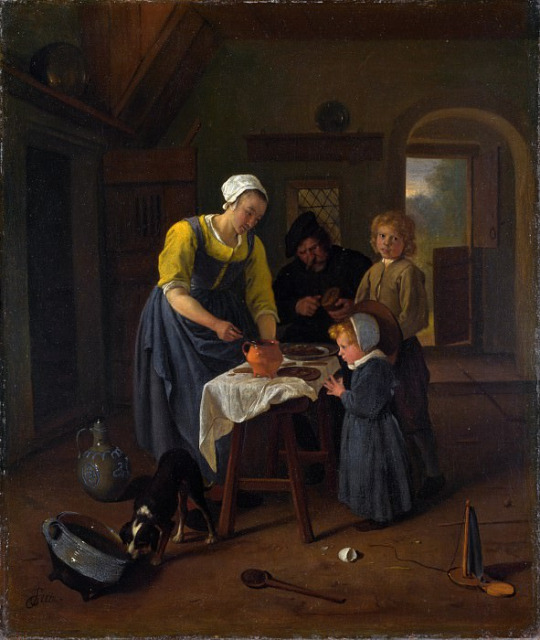
A Dutch painting from circa 1665.
In the above painting the woman seems to wear a full petticoat (the bodice and skirt are same color) with lacing on the front and what seems like a waistcoat under it. It's hard to say if the bodice is boned. This is a nice example as the partlet (the collar had mostly lost popularity by this time) is under garments unlike in most other depictions where it's on top of the bodice. We can then see that the sleeved garment is pinned and has fairly high neckline making it look a lot like the waistcoats of the time. It could be that they are not all the same garment. I would have rather guessed they were full petticoats with sewn-in sleeves before seeing this painting, but some of them still could be, especially the ones that seem more fitted. I haven't found any information about it, except one webside where it was called bed gown, which I think they definitely are not as they come earlier, are sometimes very fitted and often the shoulder seem of the sleeve is shown. Bodies and petticoats with detachable sleeves and waistcoats as over-garments are still frequently found in Dutch and Flemish paintings of the time, which makes me question why would they put especially waistcoat under the supportive layer? My little pet theory is that they need it for the warmth, but they want to protect it with a less expensive petticoat and/or bodies while working.
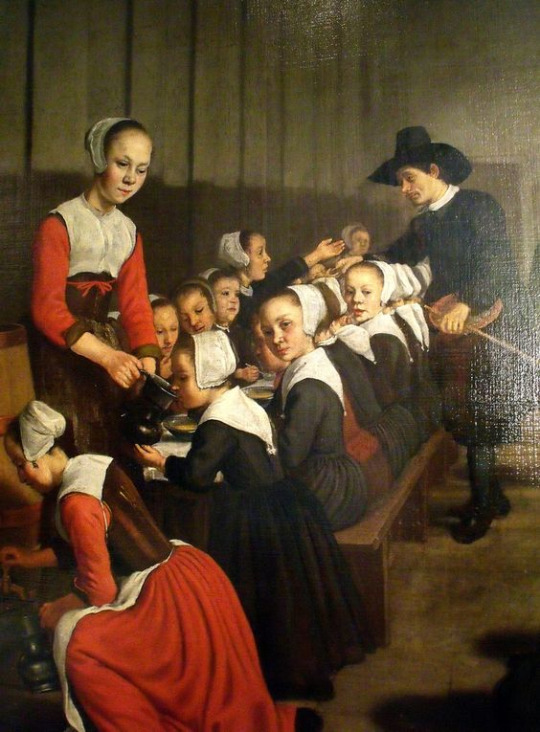
A Dutch 1659-60 painting. Here I think the women in red could be wearing sleeved petticoats or separate bodices under their bodies.
For Mary's outfit the issue is the peplum-type hemline on her blue bodice. It's very much absent in this era from bodies both boned and not, weather because the bodies end in waistline, which there's some depictions of like the one several pictures above, or the hem is under the petticoat. But I did find this one garment from the same era also depicted in Dutch and Flemish art mostly on older women. It has the peplum hem, but it's not bodies. All the examples I've seen are pinned close, so not supportive and definitely not boned. They are also cut differently. The shoulders are quite wide and the neckline high. It almost feels like sleeveless waistcoat. I found even less info on this style, so I can only guess.
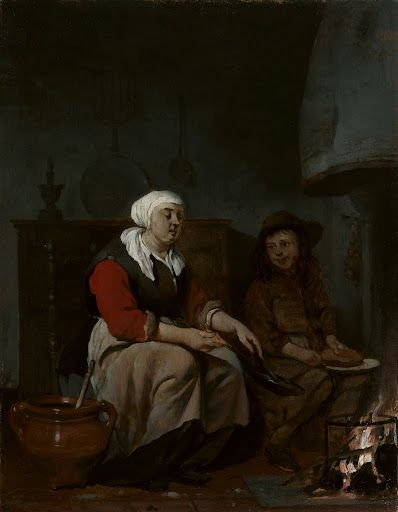
Dutch painting from circa 1650-55. The waistcoat/bodice has a hem here that extends over the gray petticoat unlike with other garments we've looked at.
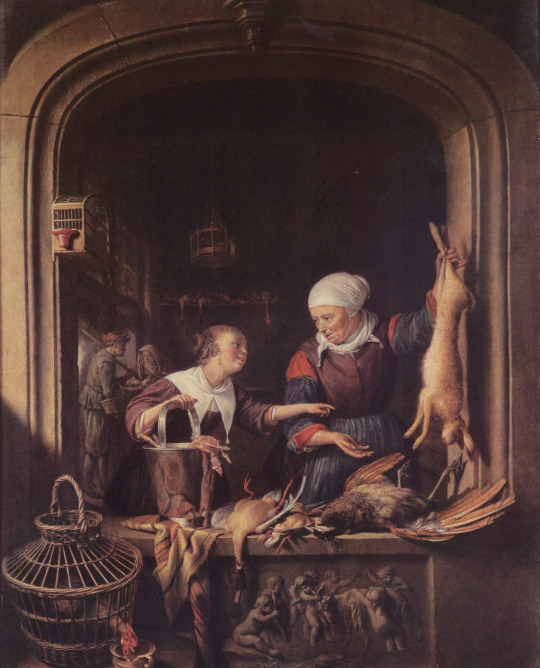
Dutch painting circa 1670. In the enlarge image you can just make out the seem of the undergarment.
I think Mary's clothing best reflects this specific style from this period of time. Her partlet also lacks the ruffle as later 1600s partlets usually do. Her apron is also gathered like those in the latter half of 1600s. Earlier aprons are usually not gathered as seen in the couple of first examples. The blue bodice I think is a mix between the sleeveless waistcoat-type garment seen in two above paintings and the separate or petticoat bodices which are not boned. It's laced and has narrow shoulders like the bodices, but it has high neckline and the hem over the petticoat like the sleeveless "waistcoats". The ruffles on her sleeves don't make sense in this time period. They could make more sense in 1700s. Over all it's actually pretty close in time and geographically to the time and place she's supposed to come from, even if it's not the way she'd actually dress if she was from early 1600s England.
#fashion history#historical fashion#historical clothing#historical costuming#bbc ghosts#working class clothing#peasant clothing#dutch golden age art#baroque#baroque fashion#elizabethan fashion#dress history#answers#ask
119 notes
·
View notes
Text
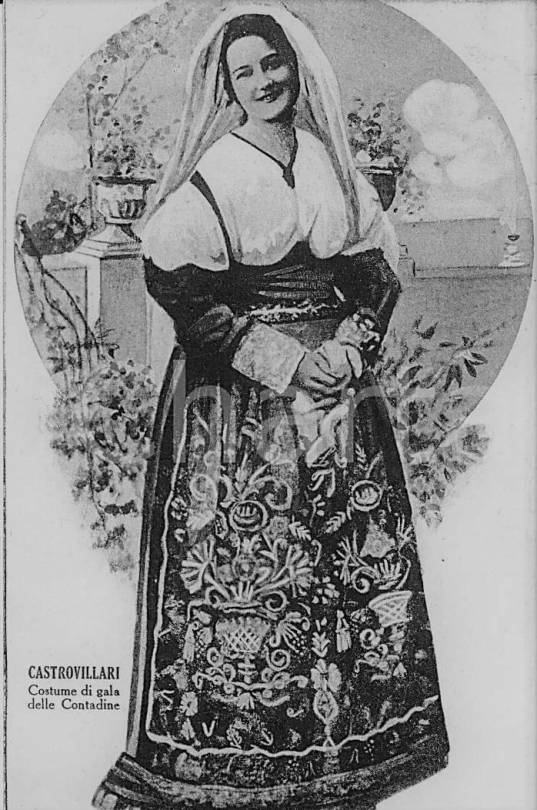
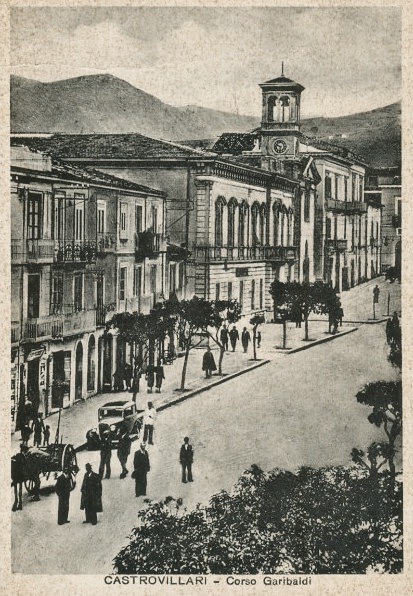
Folk costume of Castrovillari, Calabria, Italy
Follow us on Instagram, @calabria_mediterranea
#castrovillari#calabria#italy#italia#south italy#southern italy#vintage#italian#folk costume#folklore#traditional costume#traditional clothing#traditional dress#europe#folk dress#peasant#peasants#italian women#vintage photo#vintage photos
36 notes
·
View notes